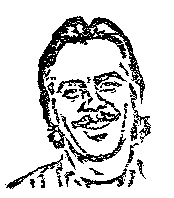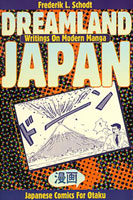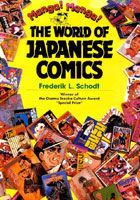
As manga continues to grow in popularity, finding in-depth and realiable information on the subject may be quite challening. Frederik Schodt, author of the famous manga information books Manga! Manga! The World of Japanese Comics and Dreamland Japan has provided English-speaking fans with valuable information concerning manga, Japanese culture, and langauge. Akadot had the opportunity to conduct an exclusive interview with Schodt and find out more about his titles and opinions about the popular manga industry.
Akadot: What was your first manga experience?
Frederik Schodt: If you define manga as "Japanese comics," I suppose I first saw them when I was attending an international high school in Japan. I couldn't speak or read Japanese then. Manga wasn't as popular as it is today, but I must have seen some in noodle shops; the funny thing is that I don't remember them. My first true "experience" with manga was in a university in Tokyo. I was living in a dormitory and my Japanese roommates were all studying manga instead of textbooks. This was around 1970, and manga had taken root among university students in a big way. It was an exciting time. I remember thinking how huge the manga magazines were. I started reading them and became hooked.
Akadot: What made you want to write Dreamland Japan? Was there a sense of need for such a book?
FS: Dreamland Japan is the sequel of sorts to my 1983 book, Manga! Manga! The World of Japanese Comics (Kodansha International). By the mid-nineties Manga! Manga! had been around a dozen years, and many people were asking about an update. Rather than simply update Manga! Manga! it made more sense to write a new book. By the mid-nineties, moreover, manga had caught on to some extent in the United States, but all the manga being imported and translated seemed to be of a very specific type. I wanted to show that there was much more variety to manga than most people thought. As a result, I deliberately focused on many lesser-known works.

Akadot: As a culture, does America grasp the "tone" of manga in the same way as the Japanese do? For example, "where X title is considered a show about loyalty and bravery, X title in America comes off as stubbornness and succeeding in spite of it."
FS: There are clearly many manga that Americans would not "get." But there is a filter mechanism at work, in the sense that the manga that are imported and translated are manga that are assumed to be marketable here. Conversely, manga for which there is assumed to be no market for in North America are rarely imported. On the other hand, I have been consistently surprised at the way young American fans of manga often have no problem with material, which is very "Japanese". An example is Rumiko Takahashi's Ranma 1/2. I was very surprised to see how successful it was in the U.S. I think there is a kind of "mind-meld" going on between the East and West, and the mentality of Japanese and Americans is gradually converging. It's inevitable, in a way, since Americans and Japanese live in an extremely similar world today, with the same sets of pleasures and problems.
Akadot: How did you select the artists you showcased in Dreamland Japan such as King Terry, Shingo Iguchi and Reiko Okano? What made them stand out past the thousand other artists in Japan?
FS: The artists were all people whom I personally found interesting. As mentioned earlier, I was also trying to showcase artists who were not so well known in America, but who were very individualistic. Earlier, with a friend named Leonard Koren, I had planned a book about the artists in Garo magazine, which has traditionally been one of the more avant garde magazines in Japan. That project never came to fruition, but I was very interested in Garo and its artists. So many of them are also featured in Dreamland Japan.
Akadot: Your books Manga! Manga! and Dreamland Japan are massive amounts of information. How did you do so much research for them?

FS: I spent years working on them. I seem to become involved in projects that take a long time, and require a lot of study. It's a learning process for me. I'm not sure I could call writing "enjoyable," since it is so hard, but I have certainly learned a great deal. For both Manga! Manga! And Dreamland Japan I read huge amounts of manga, and interviewed many people. In Dreamland Japan I was also able to incorporate information from years of interviews that I had done for a column I wrote on manga, in the Mainichi Daily News.
Akadot: What made you become a translator? How has your background effect how you approach manga as a subject to study?
FS: I make my meager living as a conference interpreter, but I have also done written translation for years, of everything from novels to manga to government speeches and computer manuals. When I lived in Japan, I loved to read manga for relaxation and entertainment, and I also found them a great way to learn about Japan and its culture, not to mention the language.
Want to read more?! Then check out Part II of Akadot's interview with Frederik Schodt coming soon.






